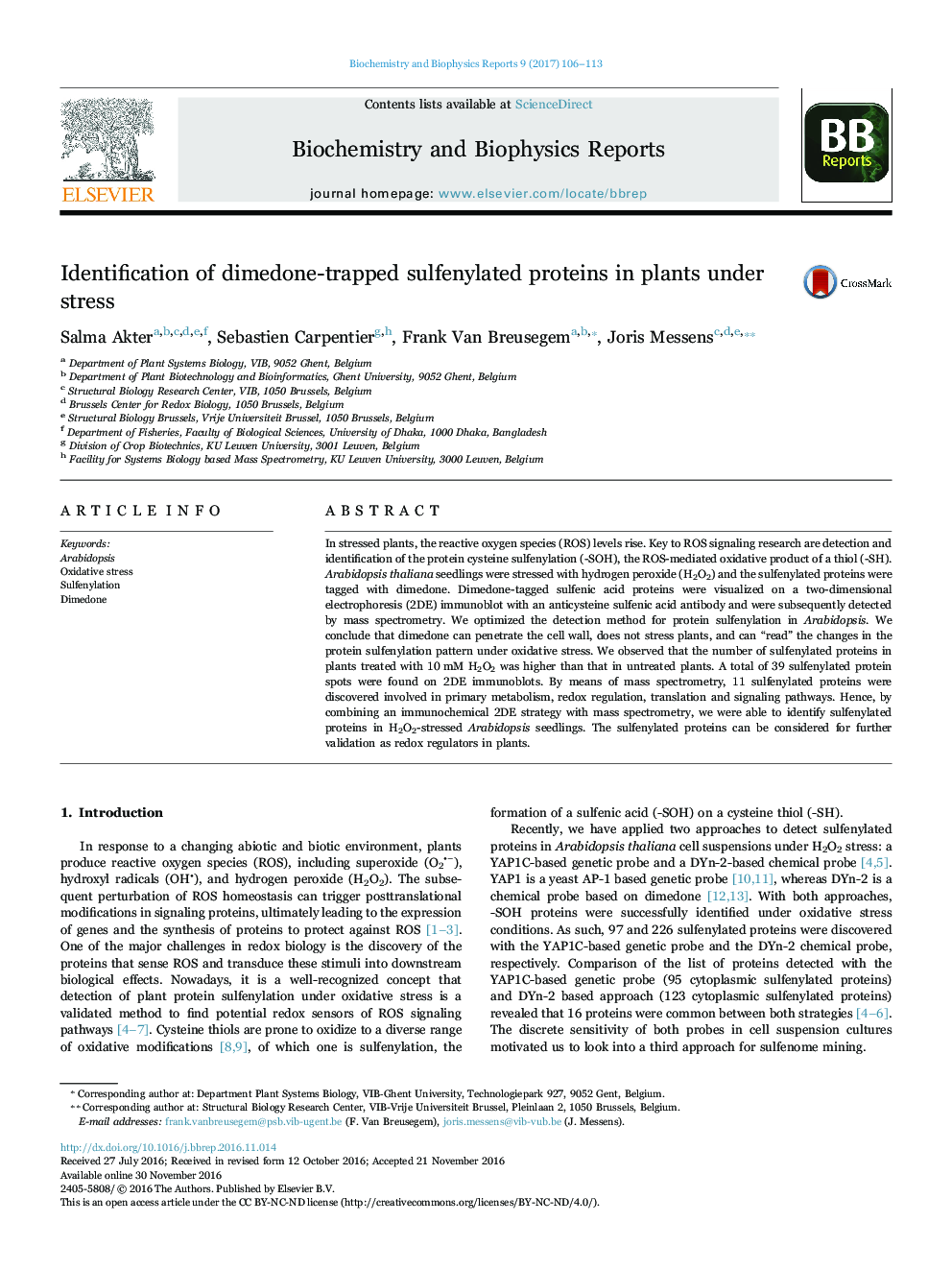| کد مقاله | کد نشریه | سال انتشار | مقاله انگلیسی | نسخه تمام متن |
|---|---|---|---|---|
| 5507082 | 1536899 | 2017 | 8 صفحه PDF | دانلود رایگان |
- A chemical detection method for protein sulfenylation in plants is proposed.
- Dimedone is a non-toxic, plant cell permeable, sulfenome 'reader'.
- H2O2 responsive sulfenylated proteins identified by combining an immunochemical 2DE strategy with mass spectrometry.
In stressed plants, the reactive oxygen species (ROS) levels rise. Key to ROS signaling research are detection and identification of the protein cysteine sulfenylation (-SOH), the ROS-mediated oxidative product of a thiol (-SH). Arabidopsis thaliana seedlings were stressed with hydrogen peroxide (H2O2) and the sulfenylated proteins were tagged with dimedone. Dimedone-tagged sulfenic acid proteins were visualized on a two-dimensional electrophoresis (2DE) immunoblot with an anticysteine sulfenic acid antibody and were subsequently detected by mass spectrometry. We optimized the detection method for protein sulfenylation in Arabidopsis. We conclude that dimedone can penetrate the cell wall, does not stress plants, and can “read” the changes in the protein sulfenylation pattern under oxidative stress. We observed that the number of sulfenylated proteins in plants treated with 10Â mM H2O2 was higher than that in untreated plants. A total of 39 sulfenylated protein spots were found on 2DE immunoblots. By means of mass spectrometry, 11 sulfenylated proteins were discovered involved in primary metabolism, redox regulation, translation and signaling pathways. Hence, by combining an immunochemical 2DE strategy with mass spectrometry, we were able to identify sulfenylated proteins in H2O2-stressed Arabidopsis seedlings. The sulfenylated proteins can be considered for further validation as redox regulators in plants.
Journal: Biochemistry and Biophysics Reports - Volume 9, March 2017, Pages 106-113
